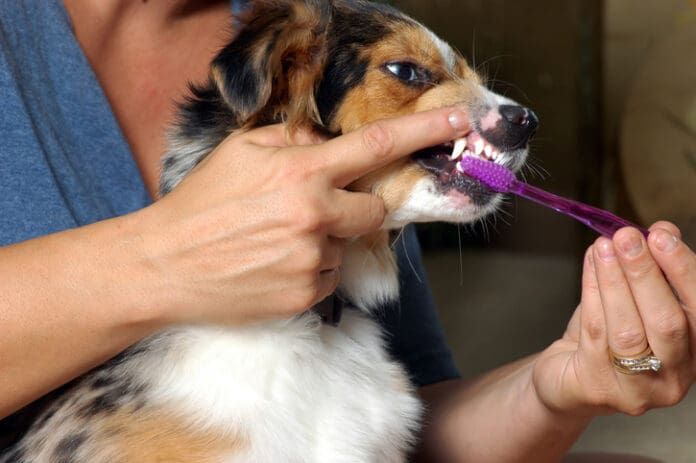If your dog tore his anterior cruciate ligament (ACL), your veterinarian may recommend surgery. That can be stressful for you, your dog, and your wallet. If you want to avoid surgery for your dog’s torn ACL, you may wonder if you can use an ACL dog brace and give your dog reasonable comfort and care. The answer: Yes, but you must purchase a good ACL brace for your dog.
Note: Dogs don’t have an ACL. They have a cranial cruciate ligament (CCL), so the correct diagnosis is a torn CCL, but the terms are used interchangeably.
Wondering if your dog has a torn ACL, the signs of an acute ACL rupture are quite classic. Usually, the dog is running and playing and suddenly gives a yelp and becomes completely non-weight bearing on a hind leg. The dog often continues to move around but will hike up or hang the affected limb and run on three legs.
Surgery for Torn Dog ACL
Surgery in the form of a tibial-plateau-leveling osteotomy (TPLO) is indeed the ideal treatment for most cruciate tears, but ACL braces are proving to be a good solution, too. The trick is to get the right brace for a torn ACL in the dog.
A research survey of dog owners comparing custom stifle orthotics and TPLO surgery found high owner satisfaction for both methods. The study used the words “custom stifle orthotics.” In an attempt to get a brace quickly and inexpensively, you may be tempted to order a cloth brace online that fits all dogs. That’s not what your dog needs to offer support to your dog’s torn ACL. Your dog needs a custom brace made out of sturdy material. A good one to consider is the one from TailWind, but many good companies make custom braces for a dog with a torn ACL.
The goal of treatment for a torn ACL in your dog is to restore stability to the stifle joint. With the loss of an intact ACL/CCL, your dog’s stifle is unstable, so the tibia and femur bones can slide past each other, causing the infamous “drawer sign,” which occurs when the veterinarian holds the femur in place while the tibia can be pulled forward, like a sliding drawer. It’s a positive indication of a CCL rupture. This laxity causes pain and leads to the development of osteoarthritis.
Cost of an ACL Brace for Your Dog
A custom ACL brace for your dog will be more expensive, possibly $100 or more, though still less than surgery. It must be properly fit your dog, so he is comfortable walking with it. You will still need to do rehabilitation exercises and follow a protocol to allow healing.
Be aware that some problems with braces include sores from the brace not fitting perfectly or having poor padding, continued lameness even after time and rehab, your dog not tolerating his brace well, and, in the end, potentially needing surgery anyway.
No Quick Fix for Torn ACL in Dogs
So, obviously, braces are not a quick fix, anymore than surgery is. Sometimes a veterinarian will prescribe a brace post surgery to help your dog’s healing process.
Regardless of which method you choose, work with your veterinarian to be sure you have the correct diagnosis and for direction and input as you work your dog through recover.







